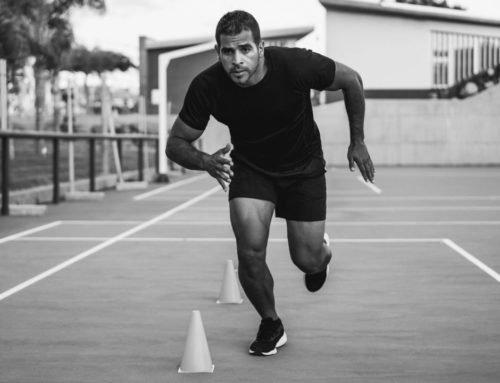Corrective exercise specialist Dr Sean Pastuch looks at the practice of injury self-treatment in CrossFit and reveals why it’s vital to maintain your body and not try to fix it yourself, so you stay pain free while training through injury and hitting new PBs.
Training through injury, a common Crossfitter problem
Let me start by saying I’m going to be referencing CrossFit athletes in this atricle because I use it as my fitness modality. In CrossFit circles there is a much-referenced quote by Kelly Starret that states: “All human beings should be able to perform basic maintenance on themselves.”
I agree with that notion wholeheartedly, so long as people keep it to ‘basic maintenance’ and not ‘self-treatment’. The hardest part of my job as a health professional has been mastering the ability to perform an effective treatment once and then repeat it with consistency, which is why it’s called a practice.
Even with years of training this can be tough, so it can be risky for an athlete untrained in rehabilitation to start attacking their muscles in the name of fixing them. If this is you, then what follows are the essentials you need to know to do it safely.

Treatment vs maintenance of a training injury
Think of your car. You change the oil – that’s maintenance. Your brakes blow out and you take your ride to a professional – that’s treatment. Now think of your body. You go to CrossFit, work out and then foam roll – that’s maintenance. However, if you start getting serious shoulder pain you should get treatment from a professional.
Don’t open your copy of Supple Leopard, trawl YouTube and then tape up the injured area. You wouldn’t try and fix your car’s brakes without proper training – so you should treat your body with the same respect and see a professional. When doing maintenance on yourself, the goal should be to keep a healthy body healthy because when you start trying to make an injured body uninjured you risk worsening your condition.
Questions to ask while training through an injury
To ensure your self-rehabilitation practices don’t make things worse, you should always ask the following questions:
1. What am I trying to accomplish physiologically by doing this?
2. How will doing this elicit that response?
3. Is doing this regularly working?
If you can answer the first two questions soundly and the answer to the third is ‘yes’ instead of ‘I think so’, then keep doing it. If the answer to question 3 is ‘I think so’, and you enjoy it, then keep doing it; but if you expect a result and you’re not sure if you’re getting one or not – you’re not.
Think of it this way: if you followed a squat program for months to bring up your strength, but you never knew what weights you were working with and couldn’t measure results by progressively squatting heavier, would you stay on the program? It’s unlikely, and you’d find something that’s more measurable. So do the same when doing basic maintenance on your body by always seeking the most effective method.
Injury Progress must be measured
Sure, feeling better has value but don’t mistake a half-hour’s worth of improvement for a result that’s valuable in the long term, or isn’t repeatable with consistency. There are a lot of great doctors out there putting great information in free forums. Use it, sample it, treat it all like a buffet line and do what you enjoy while leaving the rest on the table. If nothing else, the opportunities provided online give you the chance for trial and error that never existed before.
Just understand that when doctors and injury-treatment specialists put a method on the web, they’re throwing a dart in a dark room and hoping it hits something for you. If there are enough targets in the room, the specialists will all hit something eventually.
So the question you need to ask yourself is: was that my target? If that answer is no then keep looking for the correct remedy to your problem because it’s out there – just find it it the safe way.
Find health and fitness advice and more in every issue of TRAIN magazine. Get the mag free every month by signing up to our newsletter







